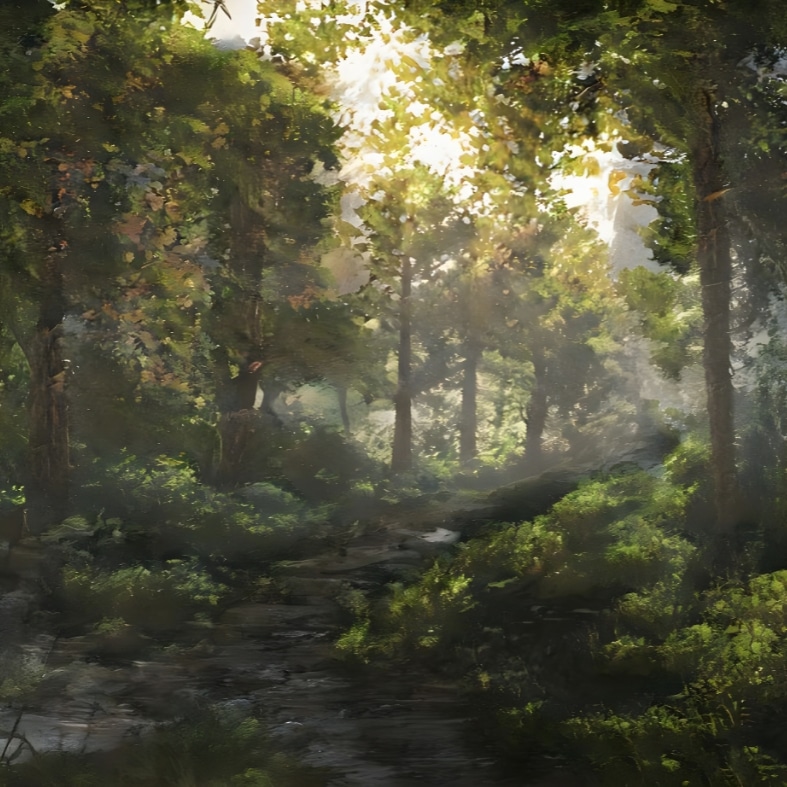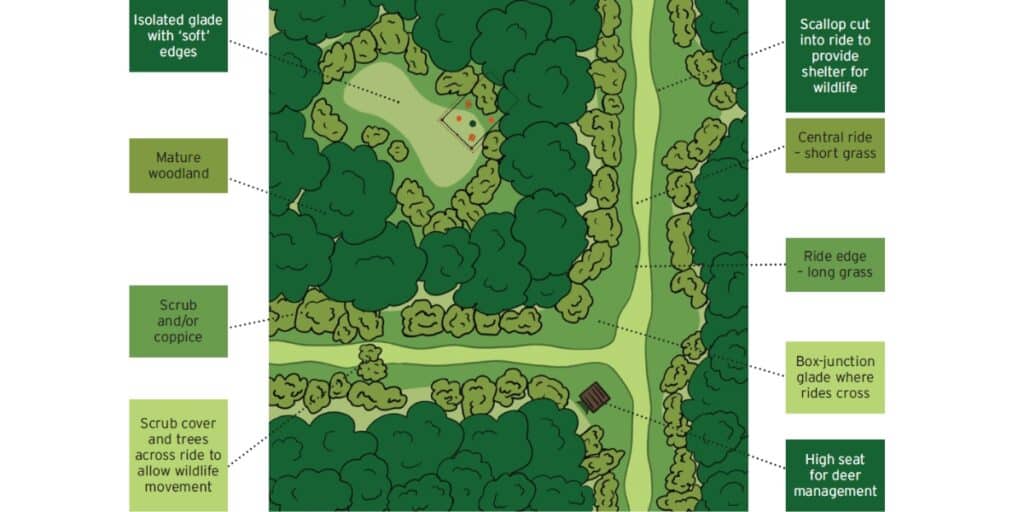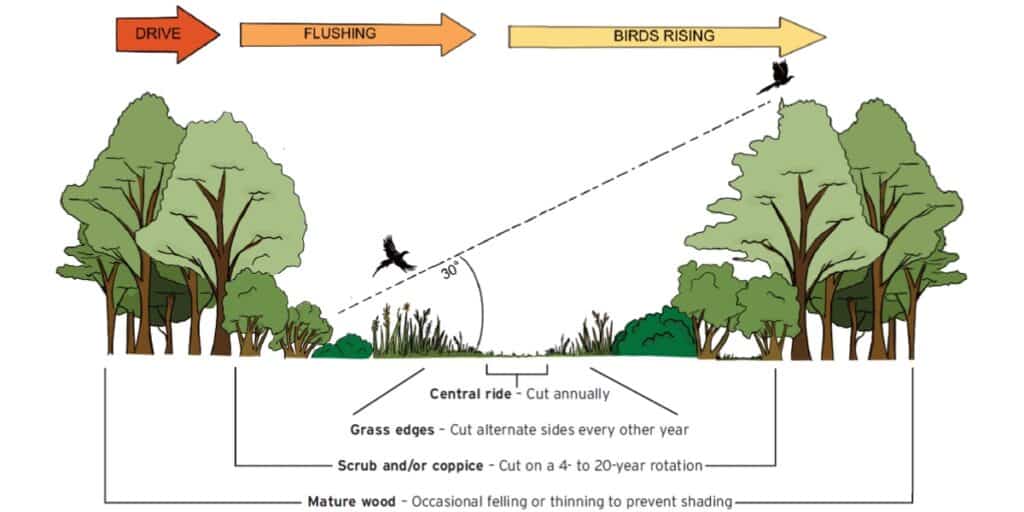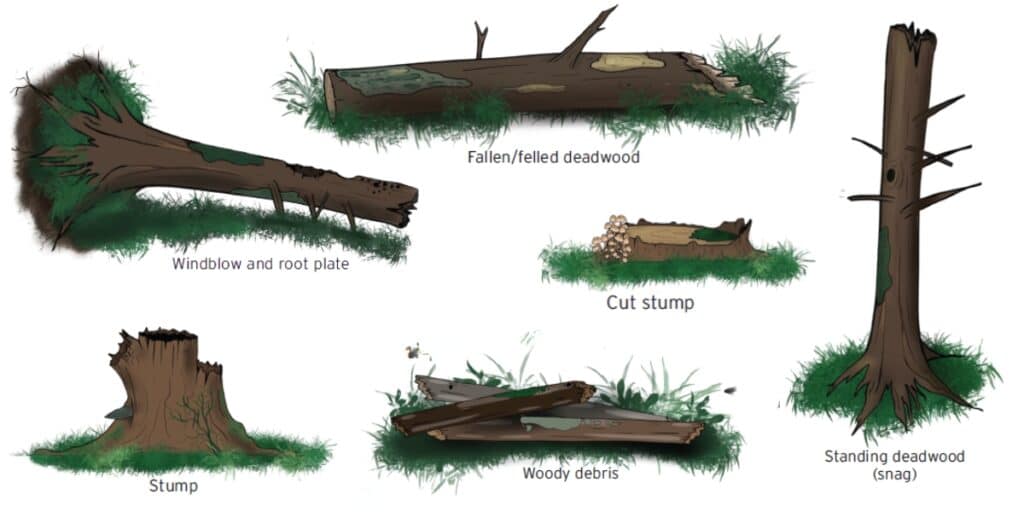
What does Boxing Day mean to you?
Everyone has their own Boxing Day traditions and the shooting community is no different, as BASC regional officer Murray Woodward reveals.
Get information on the legal shooting season for mammals and birds in the UK.
Apply for funding for your project or make a donation today
Comprehensive information and advice from our specialist firearms team.
Everything you need to know about shotgun, rifle and airgun ammunition.
Find our up-to-date information, advice and links to government resources.
Everything you need to know on firearms law and licensing.
All the latest news and advice on general licences and how they affect you.


Shooting and woodland naturally work well together, and, by managing woodland correctly, we can maximise the benefits for all. And let’s not forget that increasing woodland cover and quality is a high priority in tackling climate change and biodiversity loss in the UK.
Much of the UK’s political and media attention is on increasing the amount of woodland – and for good reason. We are bound by international agreements and pledges to combat climate change and to restore biodiversity. Woodlands are central to these targets – they are key carbon stores and increasing their coverage could help offset the carbon that society cannot avoid emitting.
We know that shooting is a key driver for woodland creation. Peer-reviewed surveys of farms indicate that, over ten years, the ones with shooting planted ten times more woodland compared with those without.
We also know that well-managed woodlands have high biodiversity value because they have developed over hundreds of years when people managed their woodlands for timber and fuel.

Since World War II, woodland management has declined but shooting does push back against that trend. Surveys carried out by GunsOnPegs indicate that over 80 per cent of shoots are actively managing woodland. GWCT research shows that where game shooting occurs on a farm, ride management, coppicing and shrub planting occur between four and seven times more frequently.
The most recent Forestry Commission data indicates that around 58 per cent of English woodlands are known to be sustainably managed. That’s either through a funding scheme or adherence to the UK Forest Standards. All rosy in the garden then? Not quite.

The Forest Research’s National Forest Inventory (NFI) provides the information on the condition of all UK woodlands through a series of 15 ecological indicators. There are some key issues across the board. The shrewd reader will infer that being in a sustainable plan and good ecological condition are not always the same thing at the same point in time. In fact, the Woodland Trust used the NFI data to deduce that just seven per cent of Britain’s native woodlands are in good ecological condition.
The question is: do you know what ‘good’ looks like for both shooting AND the ecological health of woodlands? That is the core premise of the guidance we released this year, which focuses on four of the 15 ecological indicators that are most relevant to the game shooter or deer stalker and puts those targets in a context we can use.
Standards to aim for
Benefits to shooting
Points to note

Herbivore damage is a major issue in the first 30 years of establishing new woodlands. It is also a key reason why there is too little regeneration within established woodlands and why they cannot increase in size. Damage can come from a range of species, including domestic livestock and small mammals. However, two species are of particular concern and relevance to shooting: deer and grey squirrel.
Standards to aim for
Benefits to shooting
The Woodland Ecological Condition methodology considers damage below 1.8m could be caused by many mammals but above 1.8m it is assumed to be only grey squirrel. The critical element is damage below 1.8m, as this will always lead to an unfavourable condition score. This means deer management needs to be effective, and for most people that means a cull plan is required.
Grey squirrel management is critical and, if you have red squirrels or pine martens in the area, it is often best conducted through regular bursts of live trapping. Otherwise, you can use kill traps. This can then be followed up with shooting to keep the numbers down before you do another cycle of trapping. If you are providing feed for gamebirds, then ensure you pair that with effective grey squirrel control. Greys will take the feed and there is concern that without control you are enhancing their winter survival rates, which will lead to increased damage.

Deadwood is a key part of a healthy woodland environment. That deadwood can be both off the ground as dead limbs or entire trees, or it can be on the ground in the form of stumps or fallen trees and limbs. Deadwood is broken down by fungi and invertebrates and some of those invertebrates are natural food for game. So it is especially important for gamekeepers to consider the recommended levels as a minimum, so they are confident there is a surplus for any natural foraging by gamebirds.

Standards to aim for
Benefits to shooting
Points to note
Regeneration means making new, and in forestry that means trees and shrubs being able to produce enough new growth to replace themselves. To achieve this, a woodland will need to provide trees and shrubs with enough light, space and protection from herbivores for their seeds to survive and grow. So, while managing woodland, you’ll need to work towards meeting the open space and herbivore damage elements to achieve good regeneration.
Woodlands that can regenerate are good for game because they are ‘warm’ woods with cover. For the deer manager they’ll hold deer better and so it is important to make sure you have enough open space in the form of wide rides and glades to enable woodland stalking.
Regeneration levels in most woodlands are poor, and it can be difficult to spot what is not there. Make yourself check for seedlings, saplings and young trees. Are they there or not?

Standards to aim for
Benefits to shooting
Do also make a record of the condition of your woodland. Not only is it important so you keep track of its condition, but it also provides the key evidence BASC can use to show shooting’s conservation value.
Advice is essential unless you happen to be a forester by training. The main grant schemes across the UK for woodland creation and planting can gain you access to professional advice but for many landowners entering that process, this is a bigger step than they are willing to initially make.
The Sylva Foundation helps run a government-funded scheme (see below) to access advice. BASC has met the foundation to share ideas on what good woodland management should look like.
You can contact your BASC regional office for further information.

Landowners in England may be eligible to apply for a package of free advice to support woodland creation or management.
The free advice is provided under the PIES (Protect, Improve, Expand, Sustain) project funded by Defra and the Forestry Commission, delivered via a partnership between three organisations: Sylva Foundation, Forestry Canopy Foundation, and Grown in Britain.
Eligible landowners include those with existing woodland that do not have a current management plan in place, and/or any landowner interested in creating new woodland on their land. The offer is available only to landowners in England.
So far, 91 landowners with 3,000ha have benefited from the funded advice package, covering more than 400ha of existing woodland, and with 114ha of new woodland proposed.
The PIES project provides a network of independent forestry agents to deliver high-quality and standardised advice to landowners across England. Landowners taking part in the project receive one-to-one advice plus ongoing online support and technical services. Following the initial advice and visit, plans and maps are shared with the landowner via a free account on the myForest online platform run by Sylva Foundation. The platform provides ongoing support, while simplifying the process of applying for government incentives and meeting regulatory requirements.
Beneficiaries are supported in planning to comply with the UK Forestry Standard, achieving Grown in Britain certification, and improving access to the Woodland Carbon Code. In addition, Grown in Britain Forest Certification is offered free for three years as part of the project, supporting eligible landowners in making the most of their woodland resource.
The PIES online application process has been designed to be straightforward. Read more and apply here.


Everyone has their own Boxing Day traditions and the shooting community is no different, as BASC regional officer Murray Woodward reveals.

Following the loss of his sight, Brian Little describes how he regained his love of life through being out in the countryside with his shooting friends.

The card provides proof of identity and qualifications for BASC members and non-members, perfect for gaining shooting permissions.
Sign up to our weekly newsletter and get all the latest updates straight to your inbox.
© 2025 British Association for Shooting and Conservation. Registered Office: Marford Mill, Rossett, Wrexham, LL12 0HL – Registered Society No: 28488R. BASC is a trading name of the British Association for Shooting and Conservation Limited which is authorised and regulated by the Financial Conduct Authority (FCA) under firm reference number 311937.
BASC Direct Ltd is an Introducer Appointed Representative of Agria Pet Insurance Ltd who administer the insurance and is authorised and regulated by the Financial Conduct Authority, Financial Services Register Number 496160. Agria Pet Insurance is registered and incorporated in England and Wales with registered number 04258783. Registered office: First Floor, Blue Leanie, Walton Street, Aylesbury, Buckinghamshire, HP21 7QW. Agria insurance policies are underwritten by Agria Försäkring.
If you have any questions or complaints about your BASC membership insurance cover, please email us. More information about resolving complaints can be found on the FCA website or on the EU ODR platform.